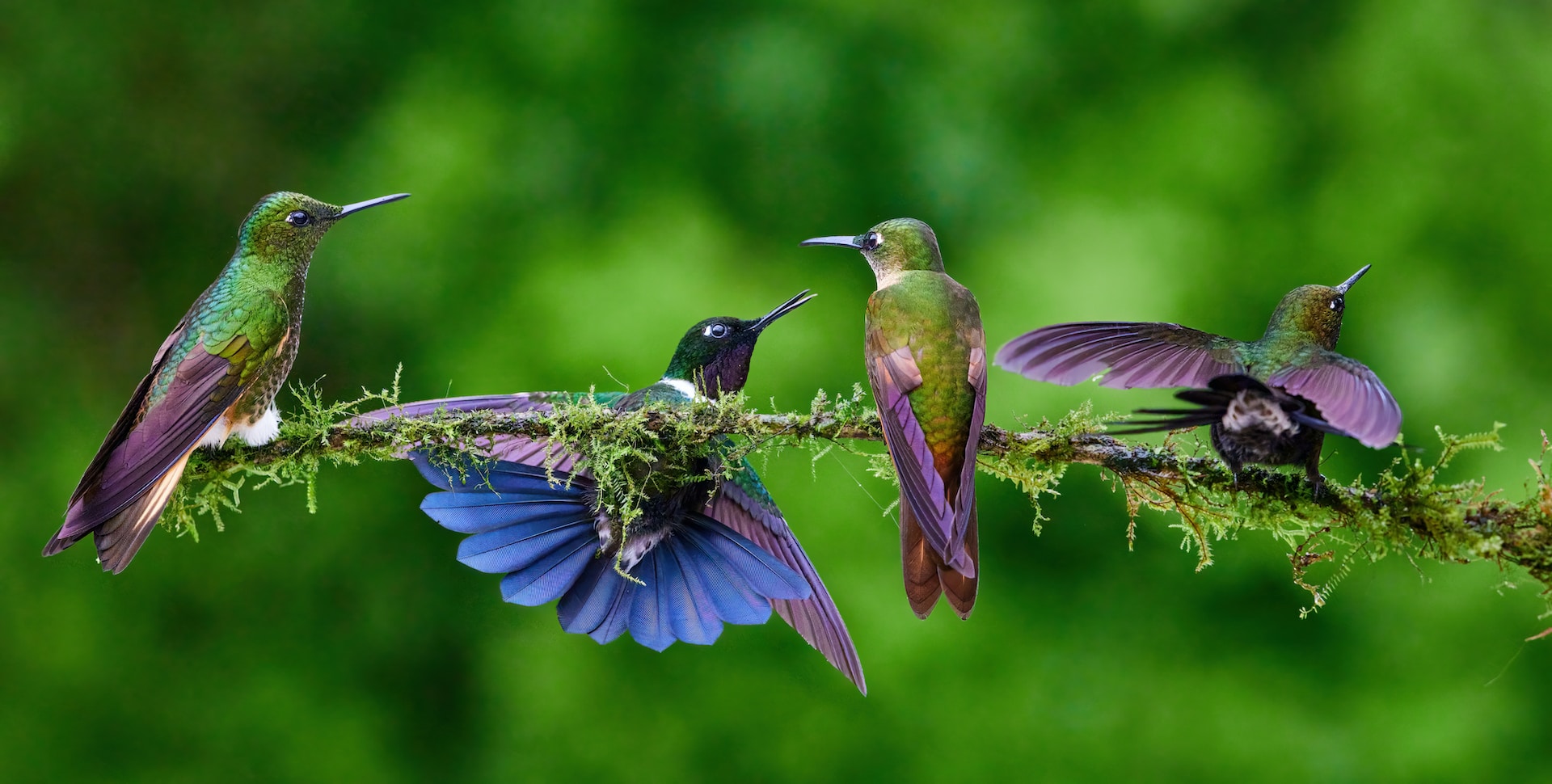The Life and Habits of Hummingbirds
Hummingbirds, arguably one of the most intriguing species of birds, lead unique lives full of vibrance and rapid motion. They inhabit varied habitats across the Americas, from the deserts of Arizona to the frosty Alaskan forests, and down to the sultry Caribbean Islands.
The enchanting birds are known for their exceptional flight speed, with some species reaching over 50 miles per hour. Their speedy flights accommodate their high-energy lifestyles, which revolve primarily around consuming nectar. A hummingbird’s diet requires it to visit hundreds of flowers daily, and they are integral to many ecosystems as crucial pollinators.
Among the diverse species spread throughout the U.S.A., some, like the Anna’s Hummingbird, are year-round residents, particularly in western and coastal areas. On the other hand, Ruby-throated Hummingbirds reside during summer but migrate to Central America once the cold sets in.
The Migration and Nesting of Hummingbirds
The migration process of hummingbirds is truly spectacular. Most species undertake a long journey every year with the changing seasons, often flying non-stop over the Gulf of Mexico. They travel up to 500 miles, which, if you consider the size of these tiny birds, is an incredible feat.
During migration, the birds up their nectar intake to build up fat reserves so they can endure the long journey. Arriving at their nesting spot, which is usually within a tree, they commence with creating a nest just slightly larger than a quarter, masterfully woven with spider silky fibers for elasticity.
U.S. laws, under the Migratory Bird Treaty Act, protect Hummingbirds and their nests. Disturbing or moving a nest with eggs or chicks is prohibited, exhibiting our society’s respect towards these charming creatures.
Hummingbirds and Their Interaction with Other Species
Despite their primary nectar-based diet, Hummingbirds also consume insects and spiders for essential proteins. Their interaction with other species is primarily symbiotic, especially with flowers, as they aid in pollination.
They are, however, also at odds with bees and ants, especially when it comes to accessing nectar in feeders. To solve this issue, feeder stations should ideally be placed away from trees to deter ants, while an ant-moat can be an effective barrier. Bees can be handled by choosing feeders with bee guards and regularly cleaning the sugar residues, which attract them.
Hummingbird Feeding and Care
When it comes to feeding Hummingbirds, it’s important to only provide fresh nectar. The best recipe imitates the sweetness of flower nectar, comprising one part plain white sugar to four parts water. However, remember not to add any food coloring as it can be harmful.
Feeders should generally be left up two weeks after last observed Hummingbird activity, signaling the end of their migration period. Regular cleaning of these feeders is also crucial, particularly during hot weather, as the nectar can quickly ferment and become harmful.
Observing and caring for Hummingbirds requires effort, patience, and respect for their natural behavior. But, believe me, the rewards of seeing these little jewels buzzing in your backyard are definitely worth it.
<small>Image source: https://unsplash.com/photos/a-group-of-hummingbirds-perched-on-a-branch-dfItfdUBSbU </small>

